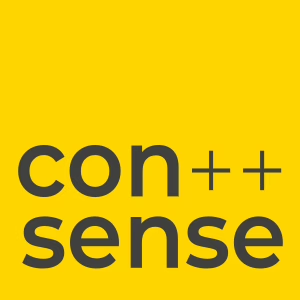Revit isn’t slow. It’s extremely powerful. But without the right Revit tools, it hides everyday time traps that drain focus and pile stress onto already busy teams. Most users don’t notice how much time slips away until deadlines close in and the late nights begin.
Luckily for us, these bottlenecks aren’t inevitable. In fact, with the right approach and Revit tools, you can clear them out of your workflow and reclaim hours of creative energy.
5 Revit Time Traps That Slow You Down and How Revit Tools Can Help
1. Endless Manual Schedule Cleanup Made Easy With Revit Tools
If you’ve ever exported a Revit schedule to Excel, you know the pain. What starts as a quick fix turns into hours of formatting, tweaking column widths, and re-importing data, only to discover that something broke in the process. Multiply that across multiple schedules, and you’re suddenly buried in late-night admin work instead of BIM design or time with your family. It’s not just wasted time, but also energy you could have spent designing or resting rather than wrestling with spreadsheets.
Many firms lean on Excel or third-party “Tables” solutions as a workaround. However, those often create more problems than they solve. Dozens of sheets to track, broken links, and confusion over which version is the latest. Instead of simplifying your workflow, they add another layer of chaos.
Simpler and more straightforward Revit tools that do not require exports, fragile spreadsheets, or wasted hours are available, though. With a lightweight Revit plugin like BetterClassifier++, you can build structured, native schedules directly in Revit.
As a result, your data stays organized where it belongs – inside your model, and you can enjoy clean, reliable Revit schedules without the midnight scramble before a deadline. One mid-sized firm we’ve worked with, for example, reported cutting their schedule formatting time by 40% after switching.
2. Messy, Error-Prone Exports and the Revit Tools That Prevent Them
On the surface, your Revit deliverables may look fine. But handovers often reveal a different story: inconsistent naming, broken references, or formatting that doesn’t survive outside your team’s environment. Therefore, what should be a smooth transfer of information ends up being a frustrating game of “find the mistake.” Meanwhile, every error puts your reputation at risk, even if it wasn’t your fault.
The problem isn’t just technical; it’s about trust. When clients or contractors spot errors in your exports, it chips away at their confidence in your work. Yet, many firms still accept this as “just part of the process,” patch mistakes manually, and hope nothing slips through the cracks.
Some third-party Revit tools, for example, Excel-based plugins such as Tables, can help organize data, but they don’t stop errors from creeping in at the export stage.
What does? Project Browser++. It’s a lightweight Revit tool that helps professionals like you enforce standards and maintain structured navigation directly in Revit, so your exports stay clean, reliable, and consistent from day one.
Thus, you get clean Revit handovers and peace of mind. One design team told us they went from dreading handovers to treating them as routine because they finally trusted their deliverables to hold up under scrutiny.
3. Constant Workset Switching Solved by Smarter Revit Tools
If you’ve worked in Revit long enough, you’ve probably misplaced elements on the wrong workset. It usually happens in the middle of a busy project. Someone forgets to switch, places a wall or annotation in the wrong spot, and suddenly the model is cluttered with errors. The go-to solution for this tends to be hours of detective work, checking visibility settings, and retracing steps.
Most firms try to solve this with training or reminders, but that only goes so far. Even the most disciplined teams make mistakes when deadlines are tight. And the truth is, no amount of policing can fully prevent it.
BetterWorkset++ takes the burden off your team. Instead of relying on memory or micromanagement, it automates the process and ensures elements land in the right place every time. No nagging, no manual policing. Just clean, consistent models. So, you can spend less time fixing mistakes and more time moving projects forward with confidence that your team’s worksets stay organized without constant oversight.
This is where Revit tools really prove their value – small automations like these prevent hours of wasted rework.
4. Too Many Open Windows & Tabs? Revit Tools Keep Your Workspace Clear
Revit has a way of multiplying windows. Before you know it, you’ve got dozens of views, sheets, and schedules open at once. Every click to find the right one slows you down, and the clutter drags on performance. What should be a streamlined workspace turns into a messy desktop that eats focus and energy.
The frustration isn’t just about speed, but also about your mental load. Instead of staying in creative flow, where you’d rather be, you’re constantly breaking concentration just to… manage windows. Over time, those extra clicks add up to hours of lost productivity.
What’s surprising is that most software solutions don’t even talk about this issue. Indeed, it’s one of the most common day-to-day frustrations Revit users face.
Window Browser++ is a lightweight Revit tool, a plugin that solves it in seconds. It gives you a clean list of every open window, with one-click navigation and bulk-close options. Consequently, you get a tidy workspace that keeps you focused on design instead of administration.
An architecture firm from Berlin told us their team used to waste 15–20 minutes a day just toggling between views. With Window Browser++, those wasted minutes disappeared, freeing up time for actual project work.
5. Searching Blind in Large Models – Revit Tools That Speed Up Navigation
Big Revit projects can feel like a maze. Hundreds of views, sheets, and schedules pile up, and finding the right one means endless scrolling and guesswork. Every time you stop to search manually, your focus breaks, and the larger the model, the worse it gets.
The pain isn’t just about wasted time. You also risk missing critical details or duplicating work that already exists. Moreover, the frustration can be even worse when deadlines are close and every second counts.
Feature-heavy dashboards are a common approach to addressing this, but they often overwhelm more than they help. What most teams need isn’t complexity but speed and clarity, something that Project Browser++ provides.
It’s a robust but lightweight Revit tool with advanced filtering and instant search that helps you find any view, sheet, or schedule in seconds, no matter how complex the model. A BIM coordinator who adopted Project Browser++ told us: “It feels like someone finally turned the lights on. What used to take me five minutes of scrolling now takes five seconds.”
Why Choosing the Right Revit Tools Saves Time and Stress
Time traps in Revit aren’t just frustrating; they’re also expensive. They chip away at your efficiency, your focus, and your ability to deliver work you’re proud of.
While other Revit tools try to bury you in features or push you back into Excel, Consense takes a different path. It offers simple, lightweight plugins that cut through complexity and keep your projects clean from the inside out.
Therefore, if you need to save hours, reduce stress, and finally feel in control of your Revit workflow? Try Consense plugins free for 30 days and see the difference working smarter, not harder can make.
Photo: AI-generated and curated by the Consense team.

